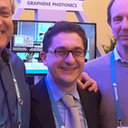Diagnostic implications of albumin messenger RNA detection and cytokeratin pattern in benign hepatic lesions and biliary cystadenocarcinoma.
Palabras clave
Abstracto
Cytokeratin (CK) patterns and albumin messenger RNA (mRNA) are investigated in 24 patients with benign hepatic lesions (7 patients with focal nodular hyperplasia [FNH], 10 with hepatocellular adenomas [HA], 1 with biliary hamartoma, 4 with biliary cysts, 2 with cystadenomas) and in 8 patients with cystadenocarcinoma, a rare liver malignancy. The lesions and surrounding tissue of the hepatocytic components expressed CK 8 and 18 at immunohistochemistry, whereas the biliary elements evidenced CK 8 and 18 and CK 7 and 19. The albumin mRNA, as detected by in situ hybridization (ISH), revealed different distributions in the hepatocytes of FNH and HA. In the benign biliary lesions, the normal hepatocytes surrounding the tumors expressed albumin mRNA, whereas the biliary structures did not. Interestingly, in the cystadenocarcinomas, albumin mRNA was observed not only in the hepatocytes of residual parenchyma, but also in neoplastic bile duct cells lining the carcinomatous cysts; no signal was identified in the nonneoplastic biliary elements. This indicates that cystadenocarcinomas have a mixed biological phenotype and suggests they could arise either from pluripotent cells or from neoplastic cells that reacquire epigenetic features. Our results suggest two possible diagnostic applications for albumin ISH: on routine sections, it could represent an important tool for distinguishing between cystadenoma and cystadenocarcinoma; and on fine needle biopsy specimens, it could reduce uncertainty between FNH and HA.


